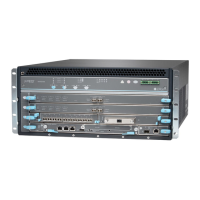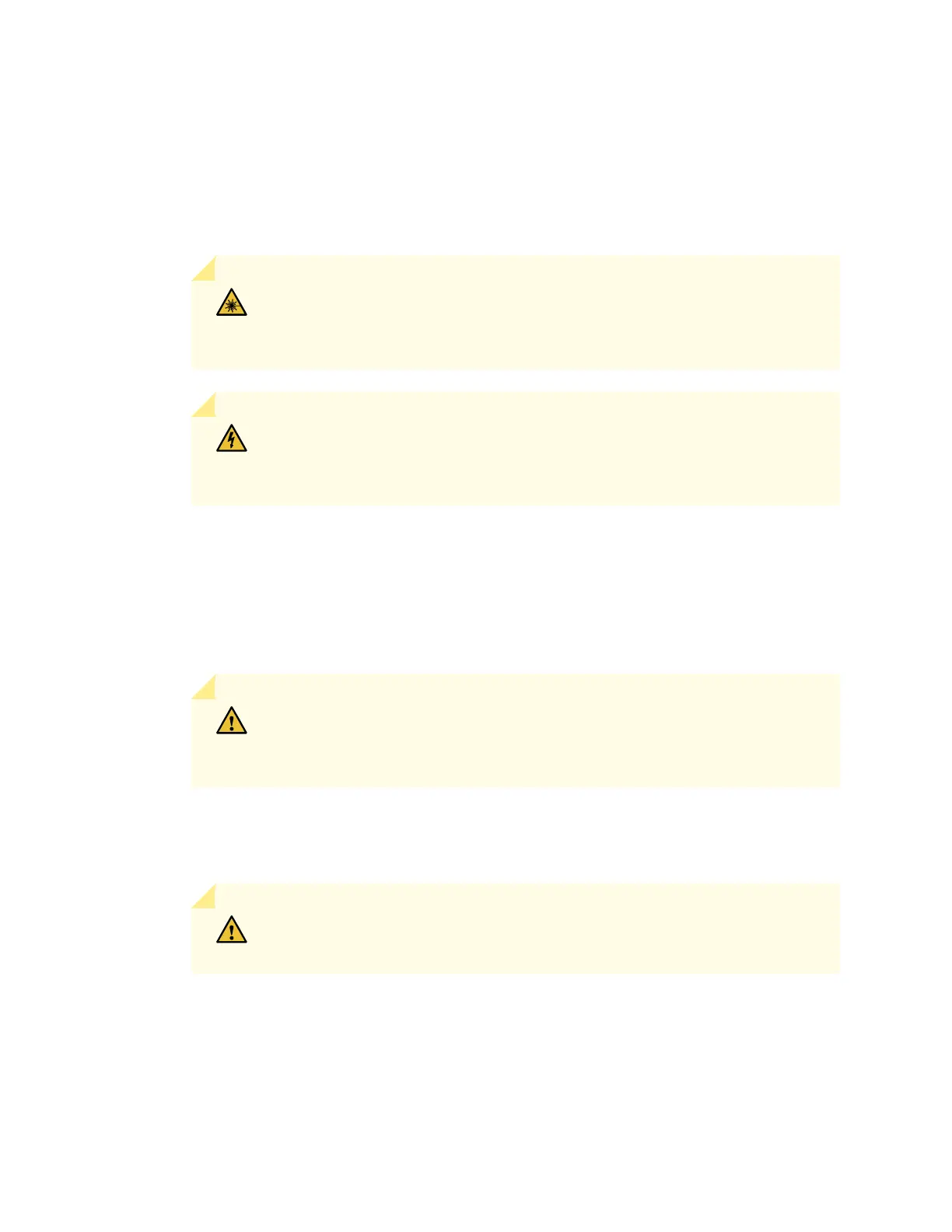To remove a transceiver (see Figure 122 on page 313):
1. Wrap and fasten one end of the ESD grounding strap around your bare wrist, and connect the other
end of the strap to the ESD point on the chassis.
2. Label the cables connected to the transceiver so that you can reconnect them correctly later.
WARNING: Do not look directly into a fiber-optic transceiver or into the ends
of fiber-optic cables. Fiber-optic transceivers and fiber-optic cables connected
to a transceiver emit laser light that can damage your eyes.
WARNING: Do not leave a fiber-optic transceiver uncovered except when
inserting or removing a cable. The rubber safety cap keeps the port clean and
prevents accidental exposure to laser light.
3. Remove the cable connector from the transceiver. Cover the transceiver and the end of each fiber-optic
cable connector with a rubber safety cap immediately after disconnecting the fiber-optic cables.
4. Carefully arrange the disconnected cable in the cable manager to prevent the cable from developing
stress points.
CAUTION: Avoid bending a fiber-optic cable beyond its minimum bend radius.
An arc smaller than a few inches in diameter can damage the cable and cause
problems that are difficult to diagnose.
5. Using needle-nose pliers, open the ejector lever on the transceiver completely to unlock the transceiver.
See Figure 122 on page 313.
CAUTION: Make sure that you open the ejector lever completely until you hear
it click. This prevents damage to the transceiver.
6. Grasp the transceiver ejector lever and pull the transceiver approximately 0.5 in. (1.3 cm) out of the
port.
7. Using your fingers, grasp the body of the transceiver and pull it straight out of the port.
312

